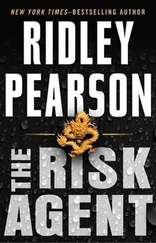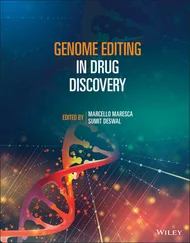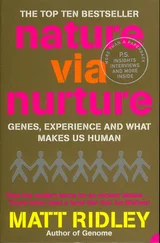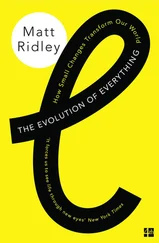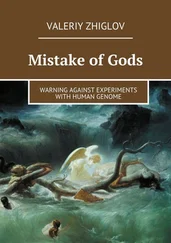Genome - Matt Ridley
Здесь есть возможность читать онлайн «Genome - Matt Ridley» — ознакомительный отрывок электронной книги совершенно бесплатно, а после прочтения отрывка купить полную версию. В некоторых случаях можно слушать аудио, скачать через торрент в формате fb2 и присутствует краткое содержание. Жанр: Старинная литература, на английском языке. Описание произведения, (предисловие) а так же отзывы посетителей доступны на портале библиотеки ЛибКат.
- Название:Matt Ridley
- Автор:
- Жанр:
- Год:неизвестен
- ISBN:нет данных
- Рейтинг книги:5 / 5. Голосов: 1
-
Избранное:Добавить в избранное
- Отзывы:
-
Ваша оценка:
- 100
- 1
- 2
- 3
- 4
- 5
Matt Ridley: краткое содержание, описание и аннотация
Предлагаем к чтению аннотацию, описание, краткое содержание или предисловие (зависит от того, что написал сам автор книги «Matt Ridley»). Если вы не нашли необходимую информацию о книге — напишите в комментариях, мы постараемся отыскать её.
Matt Ridley — читать онлайн ознакомительный отрывок
Ниже представлен текст книги, разбитый по страницам. Система сохранения места последней прочитанной страницы, позволяет с удобством читать онлайн бесплатно книгу «Matt Ridley», без необходимости каждый раз заново искать на чём Вы остановились. Поставьте закладку, и сможете в любой момент перейти на страницу, на которой закончили чтение.
Интервал:
Закладка:
The messenger is then befriended by a microscopic machine called a R I B O S O M E , itself made partly of R N A . The ribosome moves along the messenger, translating each three-letter codon in turn into one letter of a different alphabet, an alphabet of twenty different A M I N O A C I D S , each brought by a different version of a molecule called T R A N S F E R R N A . Each amino acid is attached to the last to form a chain in the same order as the codons. When the whole message has been translated, the chain of amino acids folds itself up into a distinctive shape that depends on its sequence. It is now known as a P R O T E I N .
Almost everything in the body, from hair to hormones, is either made of proteins or made by them. Every protein is a translated gene. In particular, the body's chemical reactions are catalysed by proteins known as E N Z Y M E S . Even the processing, photocopying error-correction and assembly of D N A a n d R N A molecules themselves — the replication and translation - are done with the help of proteins. Proteins are also responsible for switching genes on and off, by physically attaching themselves to P R O M O T E R and E N H A N C E R sequences near the start of a gene's text. Different genes are switched on in different parts of the body.
When genes are replicated, mistakes are sometimes made. A letter (base) is occasionally missed out or the wrong letter inserted. Whole sentences or paragraphs are sometimes duplicated, omitted or P R E F A C E 9
reversed. This is known as M U T A T I O N . Many mutations are neither harmful nor beneficial, for instance if they change one codon to another that has the same amino acid 'meaning': there are sixty-four different codons and only twenty amino acids, so many D N A
'words' share the same meaning. Human beings accumulate about one hundred mutations per generation, which may not seem much given that there are more than a million codons in the human genome, but in the wrong place even a single one can be fatal.
All rules have exceptions (including this one). Not all human genes are found on the twenty-three principal chromosomes; a few live inside little blobs called mitochondria and have probably done so ever since mitochondria were free-living bacteria. Not all genes are made of D N A : some viruses use R N A instead. Not all genes are recipes for proteins. Some genes are transcribed into R N A but not translated into protein; the R N A goes direcdy to work instead either as part of a ribosome or as a transfer R N A . Not all reactions are catalysed by proteins; a few are catalysed by R N A instead. Not every protein comes from a single gene; some are put together from several recipes. Not all of the sixty-four three-letter codons specifies an amino acid: three signify S T O P commands instead. And finally, not all D N A spells out genes. Most of it is a jumble of repetitive or random sequences that is rarely or never transcribed: the so-called junk D N A .
That is all you need to know. The tour of the human genome can begin.
C H R O M O S O M E 1
L i f e
All forms that perish other forms supply,
(By turns we catch the vital breath and die) Like bubbles on the sea of matter borne,
They rise, they break, and to that sea return.
Alexander Pope, An Essay on Man
In the beginning was the word. The word proselytised the sea with its message, copying itself unceasingly and forever. The word discovered how to rearrange chemicals so as to capture little eddies in the stream of entropy and make them live. The word transformed the land surface of the planet from a dusty hell to a verdant paradise.
The word eventually blossomed and became sufficiently ingenious to build a porridgy contraption called a human brain that could discover and be aware of the word itself.
My porridgy contraption boggles every time I think this thought.
In four thousand million years of earth history, I am lucky enough to be alive today. In five million species, I was fortunate enough to be born a conscious human being. Among six thousand million people on the planet, I was privileged enough to be born in the 1 2 G E N O M E
country where the word was discovered. In all of the earth's history, biology and geography, I was born just five years after the moment when, and just two hundred miles from the place where, two members of my own species discovered the structure of D N A and hence uncovered the greatest, simplest and most surprising secret in the universe. Mock my zeal if you wish; consider me a ridiculous materialist for investing such enthusiasm in an acronym. But follow me on a journey back to the very origin of life, and I hope I can convince you of the immense fascination of the word.
'As the earth and ocean were probably peopled with vegetable productions long before the existence of animals; and many families of these animals long before other families of them, shall we conjecture that one and the same kind of living filaments is and has been the cause of all organic life?' asked the polymathic poet and physician Erasmus Darwin in 1794.1 It was a startling guess for the time, not only in its bold conjecture that all organic life shared the same origin, sixty-five years before his grandson Charles' book on the topic, but for its weird use of the word 'filaments'. The secret of life is indeed a thread.
Yet how can a filament make something live? Life is a slippery thing to define, but it consists of two very different skills: the ability to replicate, and the ability to create order. Living things produce approximate copies of themselves: rabbits produce rabbits, dandelions make dandelions. But rabbits do more than that. They eat grass, transform it into rabbit flesh and somehow build bodies of order and complexity from the random chaos of the world. They do not defy the second law of thermodynamics, which says that in a closed system everything tends from order towards disorder, because rabbits are not closed systems. Rabbits build packets of order and complexity called bodies but at the cost of expending large amounts of energy. In Erwin Schrodinger's phrase, living creatures 'drink orderliness' from the environment.
The key to both of these features of life is information. The ability to replicate is made possible by the existence of a recipe, the information that is needed to create a new body. A rabbit's egg L I F E 1 3
carries the instructions for assembling a new rabbit. But the ability to create order through metabolism also depends on information -
the instructions for building and maintaining the equipment that creates the order. An adult rabbit, with its ability to both reproduce and metabolise, is prefigured and presupposed in its living filaments in the same way that a cake is prefigured and presupposed in its recipe. This is an idea that goes right back to Aristotle, who said that the 'concept' of a chicken is implicit in an egg, or that an acorn was literally 'informed' by the plan of an oak tree. When Aristotle's dim perception of information theory, buried under generations of chemistry and physics, re-emerged amid the discoveries of modern genetics, Max Delbruck joked that the Greek sage should be given a posthumous Nobel prize for the discovery of D N A . 2
The filament of D N A is information, a message written in a code of chemicals, one chemical for each letter. It is almost too good to be true, but the code turns out to be written in a way that we can understand. Just like written English, the genetic code is a linear language, written in a straight line. Just like written English, it is digital, in that every letter bears the same importance. Moreover, the language of D N A is considerably simpler than English, since it has an alphabet of only four letters, conventionally known as A, C, G and T.
Now that we know that genes are coded recipes, it is hard to recall how few people even guessed such a possibility. For the first half of the twentieth century, one question reverberated unanswered through biology: what is a gene? It seemed almost impossibly mysterious. Go back not to 1953, the year of the discovery of D N A ' s symmetrical structure, but ten years further, to 1943. Those who will do most to crack the mystery, a whole decade later, are working on other things in 1943. Francis Crick is working on the design of naval mines near Portsmouth. At the same time James Watson is just enrolling as an undergraduate at the precocious age of fifteen at the University of Chicago; he is determined to devote his life to ornithology. Maurice Wilkins is helping to design the atom bomb in the United States. Rosalind Franklin is studying the structure of coal for the British government.
Читать дальшеИнтервал:
Закладка:
Похожие книги на «Matt Ridley»
Представляем Вашему вниманию похожие книги на «Matt Ridley» списком для выбора. Мы отобрали схожую по названию и смыслу литературу в надежде предоставить читателям больше вариантов отыскать новые, интересные, ещё непрочитанные произведения.
Обсуждение, отзывы о книге «Matt Ridley» и просто собственные мнения читателей. Оставьте ваши комментарии, напишите, что Вы думаете о произведении, его смысле или главных героях. Укажите что конкретно понравилось, а что нет, и почему Вы так считаете.



